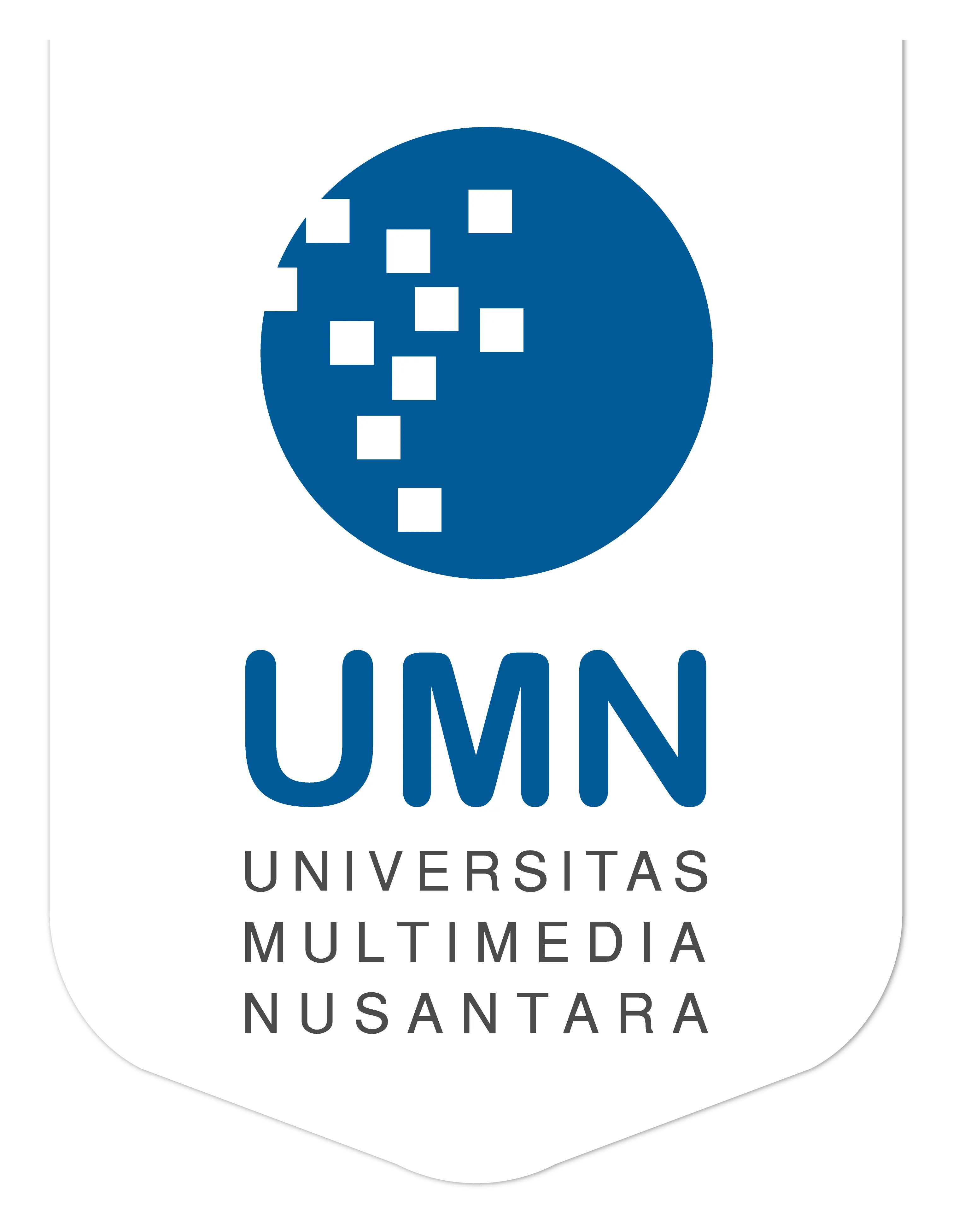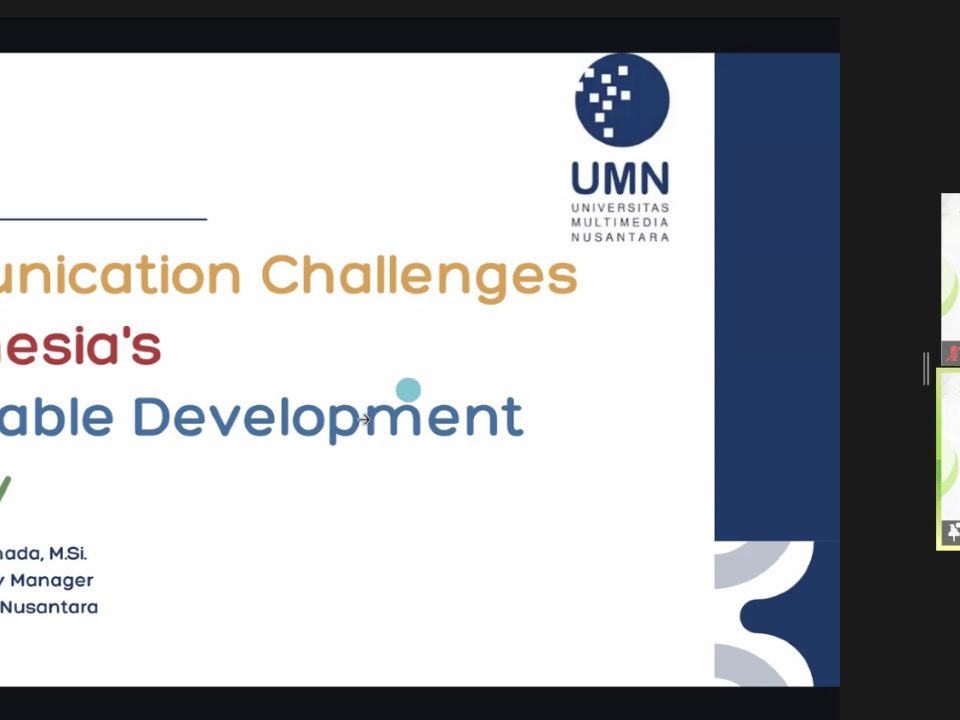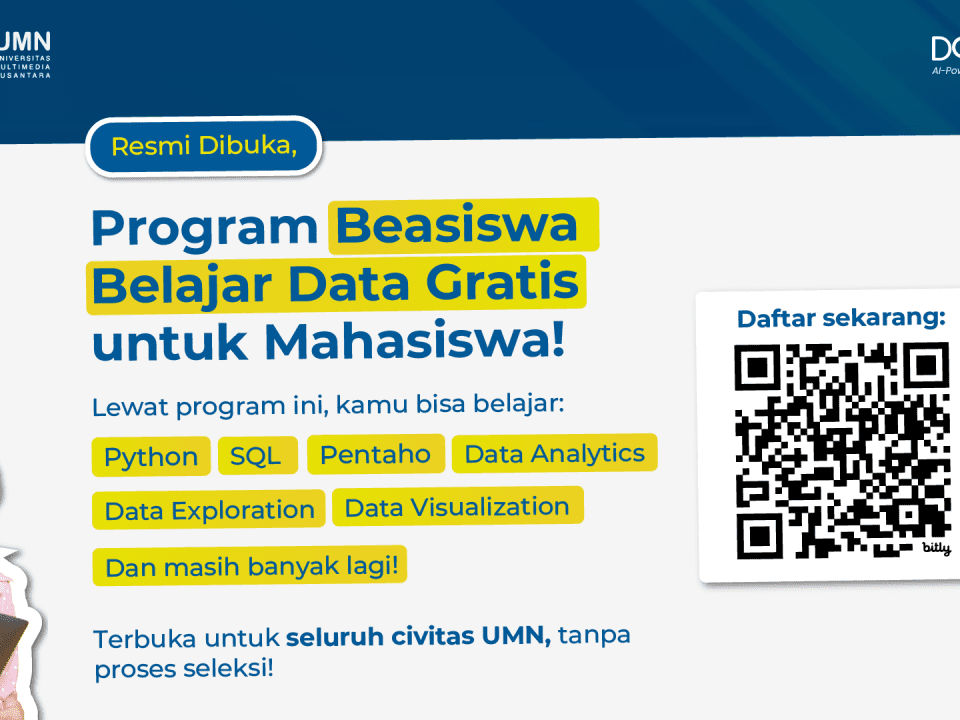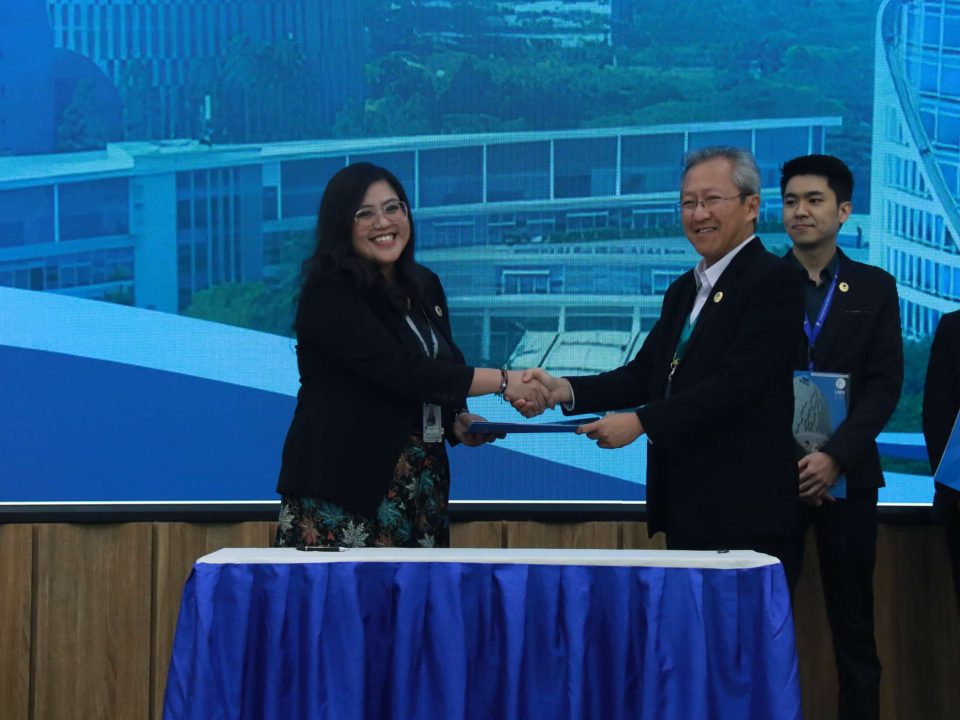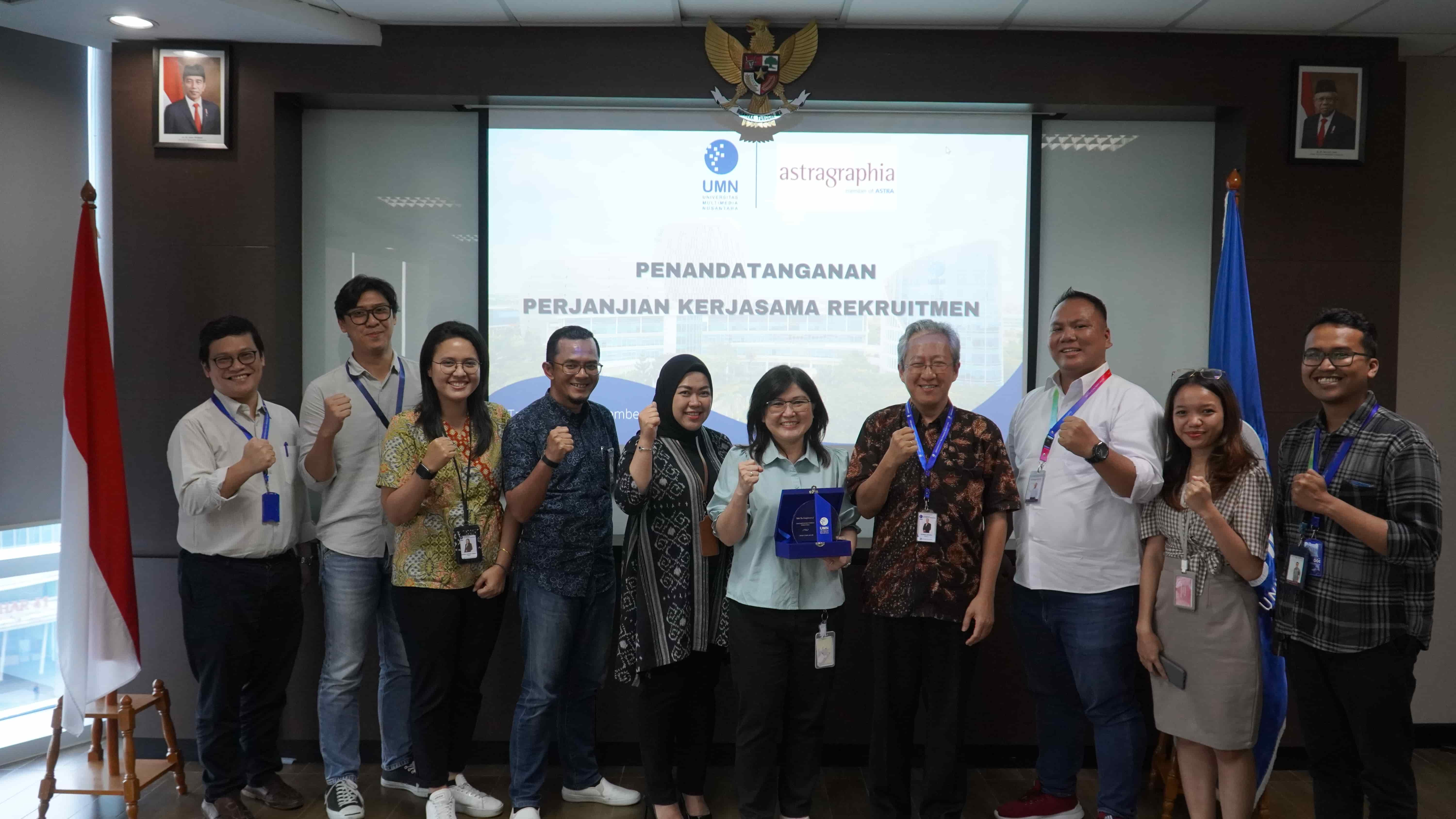
UMN Partners with Astragraphia in a Recruitment Cooperation Agreement
December 18, 2023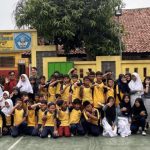
UMN Community Giving Education Beyond Classes
December 19, 2023
UMN and Silla University discuss Industrial Revolution 4.0, digital twin, and artificial intelligence. (Doc. Marketing Communications UMN)
TANGERANG – Multimedia Nusantara University (Universitas Multimedia Nusantara/UMN) and Silla University, Korea, conducted a workshop themed “Industrial Revolution 4.0 Related to Digital Twin and Artificial Intelligence (AI).” The workshop was conducted hybridly (offline and online) at the UMN campus on Monday (11/12/23).
The event was attended by several UMN and Silla University representatives, with the main speakers: Prof. Ae Jin Kim (Silla University, Korea), Muhammad Tawakkal (Manager Technical Support Festo Indonesia), and Marlinda Vasty Overbeek, S.Kom, M.Kom (Informatics Lecturer UMN).
“I’m sure that today’s workshop topic on smart factories and artificial intelligence is very interesting as AI has been growing rapidly and has become a part of our daily life,” Ir. Andrey Andoko, M.Sc, the Vice-Rector for General Administration and Finance UMN, said in his opening speech.
He also mentioned the fear of AI replacing our jobs. Hence, students must be aware of the growth of AI and be eager to learn.
“Normally, at UMN, I always remind students to be lifelong learners. Although you have graduated, you still have to learn again and again. The competence you have must be beyond AI. You must be smarter than AI,” Andrey said. He hopes this workshop can be beneficial for students to get to know AI and the opportunities UMN and Silla University’s collaboration can provide.

Professor Ae Jin Kim (Esther) from Silla University discusses the dynamics and implications of development in the field of the 4th industrial revolution in Indonesia, focusing on the KOICA ODA Project.
UMN and Silla Univerity have been working together with funding from KOICA (Korea International Cooperation Agency) (KOICA-SILLA-UMN). The cooperation established the 4th Industrial Revolution Technical Center (KSU 4IRTC) program. KSU 4IRTC is a training program that aims to produce talents who are experts and can support development in the Industrial Revolution 4.0.
In her presentation, Kim discusses many things from her experience working with UMN, the Asian automotive industry, and the positive results of the talents produced by the KSU 4IRTC program. Many KSU 4IRTC program participants have now worked under Korean companies and received positive feedback even from the Korean government.
“In September this year, I visited a higher person in the Korean government, and you know, they are really satisfied with this UMN program. They are surprised because they didn’t expect UMN to be doing this hard work. The evaluator gave umn a very high score of almost 90%,” Kim said proudly.

Marlinda Vasty Overbeek, S.Kom, and M.Kom discuss utilizing AI-natural language processing as pattern matching for the Indonesian language.
The second workshop session was led by Marlinda, a UMN Informatics lecturer. She started by explaining what AI is.
“Simply, AI is how you can create a system that can think, act, and make decisions like humans,” Marlinda explained. She then explained in-depth how AI works, some examples, and how it is trained.
Marlinda also discussed NLP and Machine Learning. Natural Language Processing (NLP) is the discipline of building machines that can understand, interpret, and manipulate human language. NLP is a subset of machine learning. Simultaneously, she also mentioned a research project of her and a team of UMN lecturers and students called “U-Tapis,” which involves AI, NLP, and Machine Learning.
U-Tapis is a language error filter application for the Indonesian language. The app aims to improve communication skills among journalists so that the mass media, in addition to its role as a conveyor of technology and information, can also carry out its role as the nation’s educator through language. The research team received a grant of Rp.308,846,000 in the Kedaireka 2022 Matching Fund program for this project.
“Since 2020 until now, I have learned Bahasa Indonesia for pattern recognition, and it turns out the language is difficult and has lots of demands,” Marlinda said. The Indonesian language has many dialects, so words with the same letters have different meanings.
She gave the Indonesian word “apel” as an example. The word can mean two different things, depending on how you say it. “Apel” can mean apple or ceremony.
In addition to the already complex language, even for Indonesians, the U-Tapis team found through analysis that there are still many writing mistakes made by students and even mass media. Hence, she hopes to realize the U-Tapis application can help increase the accuracy of Indonesian writing.
“For the Indonesian language, first, we use tokenization and post tagging, which your seniors have done. Then, NLP techniques are done to understand all sentences in one language,” she said.
The research is ongoing, and Marlinda encourages students to work and research together if they want to. This research can be developed, and more innovations can happen. She believes the application has huge potential as it can be implemented in hospitals and more.
“The opportunities are huge. So if you want to develop the knowledge further, go ahead as KOICA facilitates research studies, and even at UMN, the lab is available, and the skilled lecturers are also available,” Marlinda said. She hopes next year, more students can join and be a part of the U-Tapis research team.

Muhammad Tawakkal discusses what is a digital twin. (Doc. Marketing Communications UMN)
The final workshop session is led by Muhammad. In his speech, he explained what is a digital twin and how it works. He shared that the term “digital twin” has been widely used since the existence of Industry 4.0.
Quoting Mckinsey, a digital twin is a digital representation of a physical object, person, or process contextualized in a digital version of its environment. Digital twins can help an organization simulate real situations and their outcomes, ultimately allowing it to make better decisions.
“Anyone here knows Google Maps? That is one example of a replica model of the world,” Muhammad said.
The concept of digital twins sounds too familiar to a simulation, right? However, although digital twin and simulation use virtual model-based simulations, they have their differences. So, what are the differences between a digital twin and a simulation?
Muhammad explained that when a simulation is conducted, it focuses on just one or a few conditions or processes. In contrast, a digital twin takes the actual conditions that exist from the machine (multiple processes). So then, from these twins, from this virtual information that exists, it can be pulled again for simulation.
Here’s an easy comparison explained by TWI Global: Where simulations can help you understand what may happen in the real world, digital twins allow you to compare and assess what may happen alongside what is actually happening.
The world of AI is undoubtedly interesting and is currently growing rapidly. Through these workshops, UMN students can see the current AI trends and take a role in shaping the world of AI in Industry 4.0 and beyond.
By Levina Chrestella Theodora
English translation by Levina Chrestella Theodora
Kuliah di Jakarta untuk jurusan program studi Informatika| Sistem Informasi | Teknik Komputer | Teknik Elektro | Teknik Fisika | Akuntansi | Manajemen| Komunikasi Strategis | Jurnalistik | Desain Komunikasi Visual | Film dan Animasi | Arsitektur | D3 Perhotelan , di Universitas Multimedia Nusantara. www.umn.ac.id
